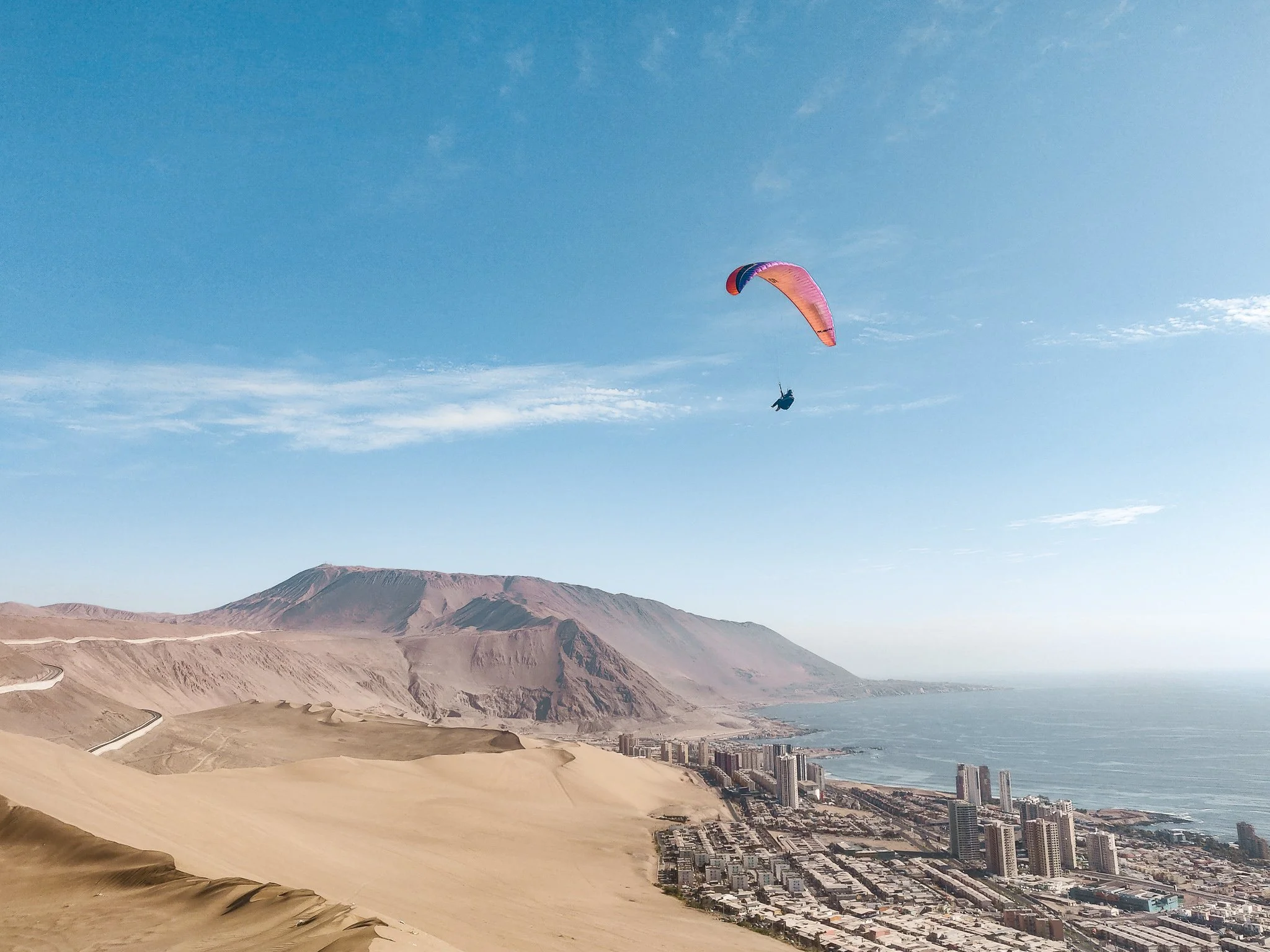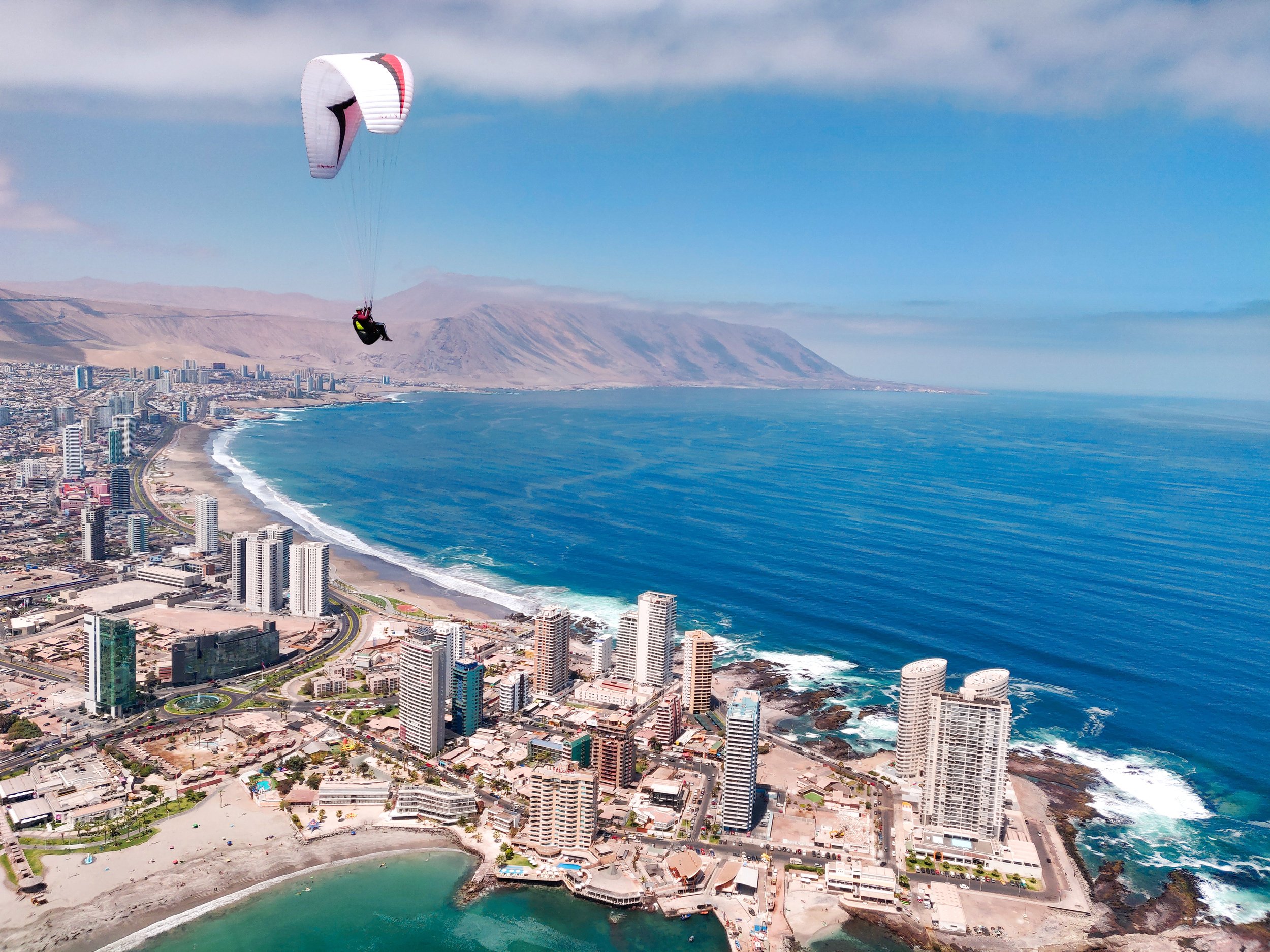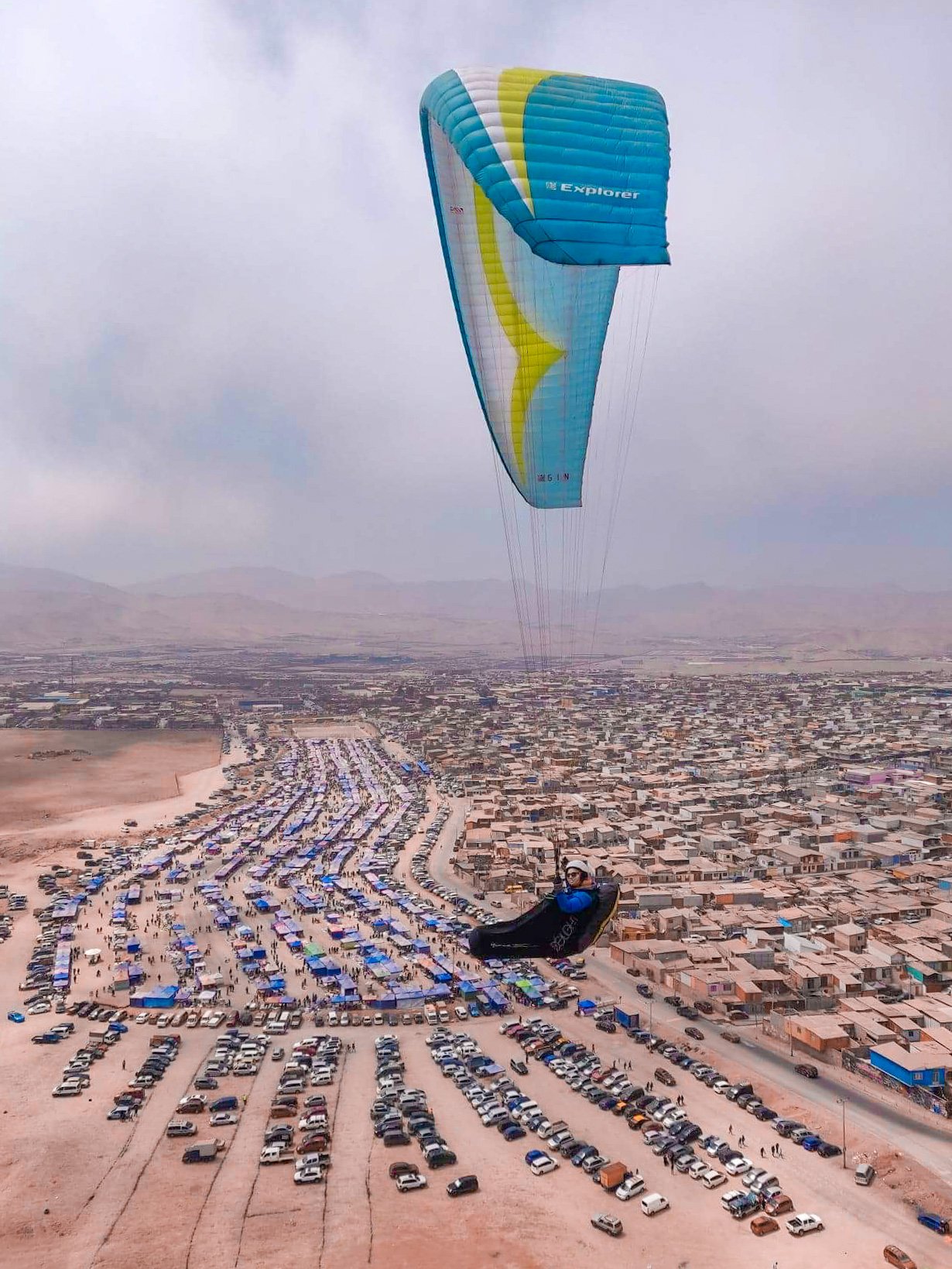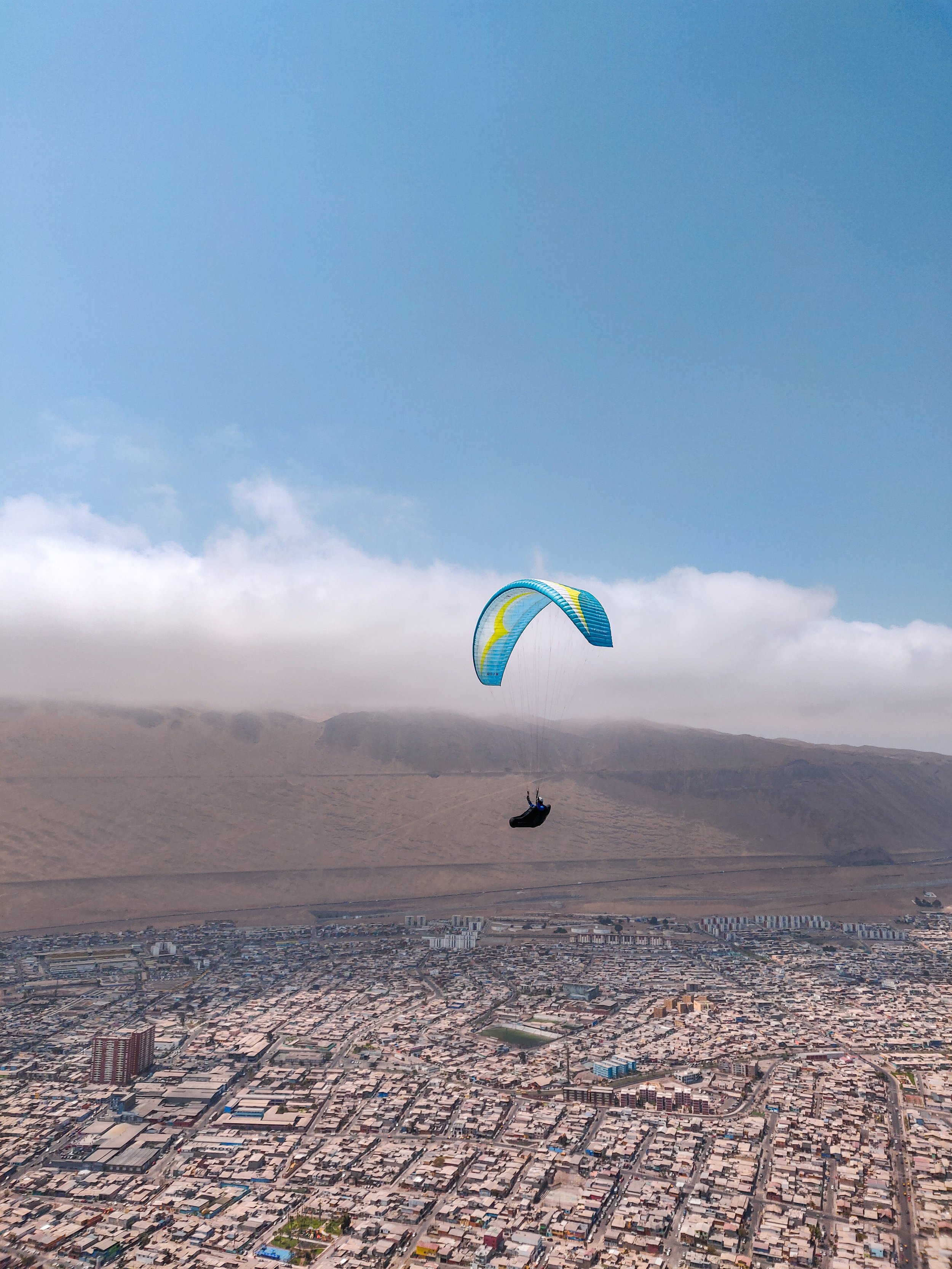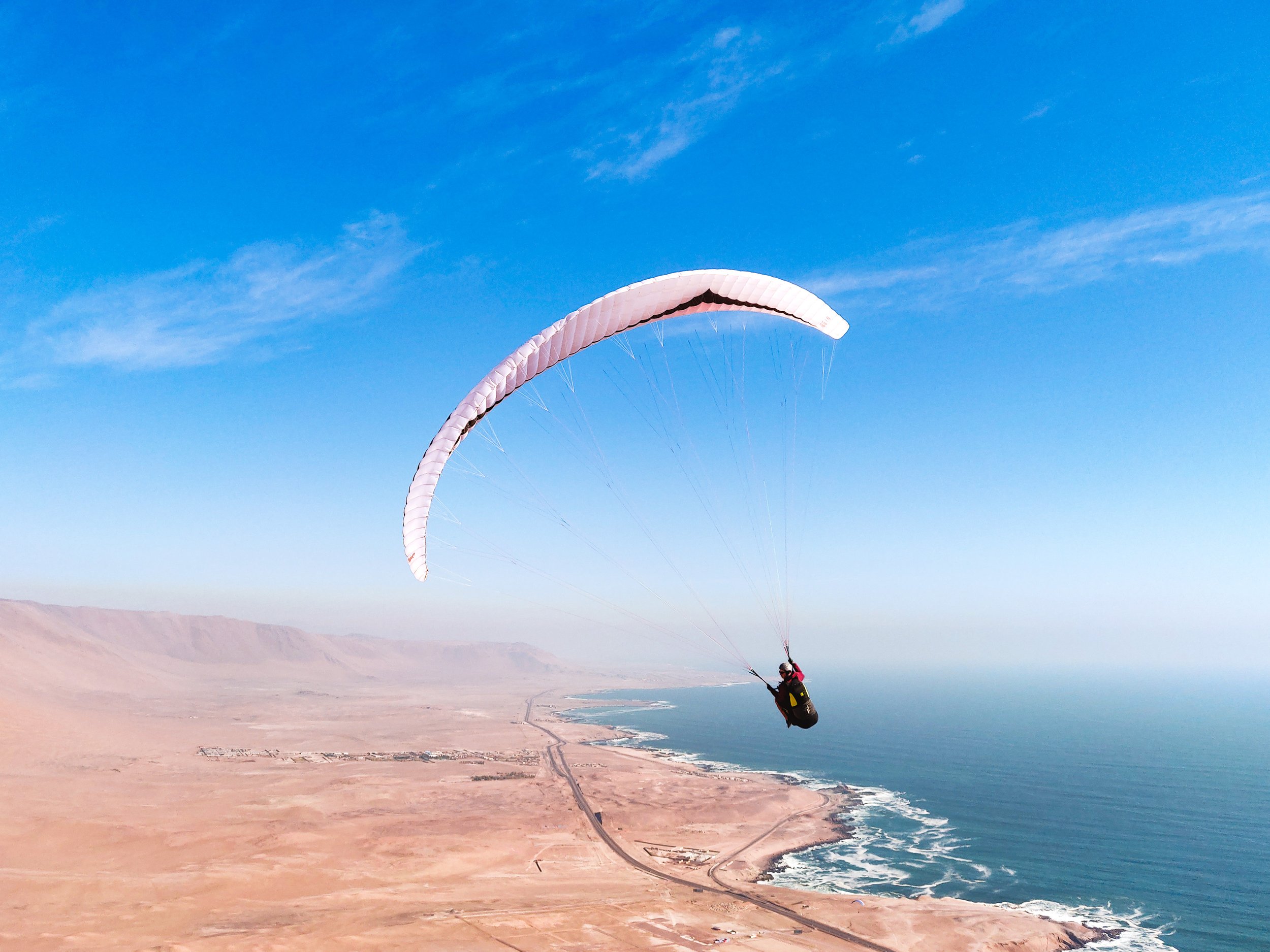Site Guide: Iquique
Alto Hospicio
The best XC flying for beginners and stunning views where the desert meets the ocean
The take-off for flying in Iquique is located in Alto Hospicio, which in fact is a city in its own right. You will be amazed when you arrive to the take-off for the first time to discover that there’s a whole other city sitting above Iquique on the ridge behind it and in theory you could take off from any part of the ridge above Iquique as the whole thing is a flyable desert landscape with little obstacles. This is the local flying site for pilots from Iquique and Alto Hospicio, where tandems frequently take-off throughout the day, and an all round awesome place to fly and practise XC.
THE FACTS
Take-Off: 500M
Landing:
Sea Level
Public Take-Off
The Site
The take-off faces West towards the ocean with a clean breeze coming from the Pacific throughout the day - although it can be more from the North or South depending on the air flow. The launch is situated in the southern half of the ridge in relation to Iquique and has many house thermals just off the take-off for finding lift.
You will notice when you arrive to the top of the ridge at Alto Hospicio, a really lovely green take-off, and you’re not mistaken, that’s a new take-off for the paragliders. Unfortunately, due to bureaucracy the new take-off has remained closed since being completed and is just there to look at for now.
What the locals call ‘El Dragon’, is the large sand dune in the middle of the city and can be a great thermal for pilots on their way to land at the beach but also a fun playground for afternoon flying on windy days. Make sure you don’t get low behind the dragon as the rotar is strong and the only landing option is in the strong rota.
There are several landings on glide from the take-off and many of the beaches are just one or two thermals away and where many of the pilots choose to land.
THE LAUNCH
The current take-off in use is located at Circunvalación 3212, Alto Hospicio and is a wide launch with plenty of space for about 10 pilots to be spread out and ready to take-off. This launch is unfortunately a dusty desert launch, however, some of the locals do put tarps down daily to protect their wings and will charge a small fee if you wish to use it.
When launching here it’s good to remember the tandem pilots have priority when taking-off, so give them space to do so. In high season or weekends it can also be busy so make sure to check the airspace directly in front of the launch is clear for you to fly into. There’s also a military base nearby and sometimes the airspace will be closed for a couple of hours in the morning as the jets come through - local pilots are informed of this but if you arrive at the take-off and no one is flying this could be why.
It can be windy at the take-off, especially at mid-day, so make sure you are confident launching in wind or take-off earlier if it’s not something you’re well practiced in.
A word on launching here: Look out for any broken glass or dog waste. The general take-off area is usually well cleared but be careful if you’re going to set-up to the side or away from that area as this is usually where there is debris.
THE LANDING
Alto Hospicio has several immediate landings on glide from the take-off and three beaches for landing after crossing the city.
Playa Huayquique
This beach is opposite the take-off and can be made on glide from the launch although you can’t see it until airborne. Generally we don’t set this as an LZ when teaching and use it when pilots are low and need to make a landing or for a beginners first flight from Alto Hospicio.
Playa Brava
This beach is the longest beach in Iquique and is immediately recognizable from the take-off. Be aware of the tandem pilots landing on the beach, giving them priority and plenty of space with their passengers - there’s so much beach here so feel free to use it. Not to point out the obvious but make sure you’re landing into the wind, it can sometimes be a different direction from the take-off. Also, watch out for the floodlights used to illuminate the beach at night and be aware of people flying kites, you don’t want to cross their lines with yours.
Playa Cavancha
This is our favourite beach to land on as it’s close to the center of the city and our accommodation. As the furthest beach away from the take-off there’s a great sense of achievement when beginners or first time XC pilots land here after having to make several transitions north along the ridge to reach the LZ. It’s good to know there is a landing restriction on this beach at several different times of the year when it becomes very busy with beach-goers and there is no longer a clear space for the paragliders to land on.
The Dragon
The Dragon is the big sand dune in the middle of the city and acts as a bailout landing for pilots who aren’t going to make the landing at Playa Brava. If landing here it’s best to land at the edge of the sand dune where it meets the main road, at about the halfway point along the dune. You will also notice a kids play park near the ideal landing spot. If you’re a patient pilot it is possible to slowly climb out from the dragon and make it back to the ridge to continue flying or out to Playa Brava to land.
FLYING TIPS
The ridge is flyable all day and at sunset has a beautiful view of the city and sun setting in the ocean as you take a buoyant sled ride to Playa Brava (or Cavancha if you have a good glide on your wing).
We tend to start flying from Alto Hospicio at around 10am with beginners before the thermals get too strong. Taking off early is also great for all pilots to practice staying up in weak thermals and sustaining altitude throughout the different cycles coming in. Once the day picks up and pilots are getting higher we then start to fly the length of the ridge, making transitions south to Playa Blanca or north to the cross near the port.
If big XC is what you’re wanting then we recommend driving South to Patillos (60km) or San Marcos (100km) to take-off and fly North back to Iquique. We prefer flying XC with Iquique as our goal, so there’s always a bar close to the landing for a celebratory XC drink.
HOW TO GET THERE
By car it’s easy to arrive at Alto Hospicio by following the highway up the ridge. The take-off is marked on google maps for your own navigation. Unfortunately, there aren’t too many shuttles going up for solo pilots to catch a ride in, as the tandems or schools are often full with their own clients.
Taking a taxi is an option to Alto Hospicio and they will charge around the equivalent of $20 US for the journey to the top.
Local buses frequently leave from Iquique to Alto Hospicio. However, this isn’t the easiest option if you don’t speak Spanish to ask the driver if they’re going towards the launch site. You also don’t want to be trying to navigate through the town from the bus stop to the take-off looking like a tourist, but it is the cheapest option

